Apple Notebooks - How About Some Color?
Wednesday, August 19, 2009
by Charles W. Moore
It’s been more than eight years since Apple sold a colored laptop, and only one somewhat limited edition black one since the Pismo PowerBook was discontinued image January, 2001.
The popularity of the black polycarbonate MacBook, notwithstanding the hefty price premium Apple put on it, attests to the fact that there’s pent-up demand for Mac laptops in other livery than silver-grey metallic or white plastic.
The early 100 series PowerBooks were a rather uninspiring industrial shade of gray, and the so-called “Blackbird” 500 series that succeeded the 100s was also more gray than black. The PowerBook 5300 and 190 were however a shade of black as were the PowerBook 1400, the PowerBook 3400 C., and the four distinct families of G3 PowerBooks.
Color entered the Mac laptop world with the original clamshell iBook of 1998, originally available in either Blueberry or Tangerine and White two-tone schemes. At MacWorld Expo 1999, a more subdued Graphite gray version was added, presumably to appeal more to folks with less flamboyant taste in color. When the “Paris” revision of the original iBook was unveiled at Paris Macworld Expo in September, 2000, the Graphite model was retained, but the other two were replaced with a darker, Indigo blue, and a very striking Key Lime model that was only available through Apple stores.
The Paris iBooks were the last colorful Apple laptops, replaced in May, 2001 by the White dual-USB iBook G3 whose essential styling and color theme lives on to this day in the entry-level white polycarbonate MacBook.
Other than that, and the aforementioned, now discontinued black version of the plastic MacBook, all Apple notebooks since the introduction of the Titanium PowerBook G4 in January, 2001 have been gray or silver=grey metallic, which is quite attractive and classy looking, but it does get a bit monotonous.
Apple needs some color in its laptops. Dell’s Inspiron line of laptops are available in your choice of seven attractive colors, and even many netbooks can be had in several different color options. Then there are the sublime (at least to gearheads like me) Acer Ferrari styled notebooks in that marque’s signature crimson red. Dell’s Vostro business laptops also come in a more subdued shade of red, and those are just a few examples. Why can’t Apple, which pioneered colorful laptops, get back with the program?
Now, I’m not suggesting that they do away with the anodized aluminum or even the White polycarbonate, although if they intend to keep making plastic-bodied MacBooks a return of the black option would be popular. I love the look of my unibody MacBook and still think my old 17” G4 PowerBook is a very attractive piece of work, but I wouldn’t mind some variety of choice.
It wouldn’t mean going back to plastic enclosures either by any means. Aluminum anodizing, which is what creates the surface layer Apple’s metal-skinned laptops (except for the TiBook which was actually painted) is electrolytic passivation process that is employed to increase the thickness of the natural oxide layer on the aluminum surface to enhance corrosion and wear resistance. Anodization can be done using a wide variety of dyes or pigments to embed color into the tough surface layer. The anodic layer is very porous as it comes out of the chemical bath — usually dilute sulfuric acid although other acids may be used — at which point it will absorb and hold dyes and colors well. A direct current charge is passed through the solution with the parts being anodized having a positive charge (anode). The negative side, or cathode, hung in the tank serving as the ground. An electro-chemical reaction forms the aluminum oxide (anodize or anodic) coating which becomes an integral part of the aluminum and is not an applied coating like a paint. Dyes are typically added by dipping the anodized metal component in a vat of concentrated dye for several minutes, then immersing it in clean, boiling water for several more minutes to seal it by hydrating the crystalline layer, which swells the oxide surface layer, closing the pores and sealing the dye within. The colors in color anodizing tend to be translucent, as the tinted layer is very thin, which leaves the shiny aluminum beneath visible through the color Apple already uses a color anodization process with its colorful iPod nano cases, which are dyed following initial anodization and before thermal sealing.
The number of dye options that can be used is almost endless, and don’t have to be limited to colors. Black anodizing is popular for certain automotive and boating hardware, and various metallics can look very classy and would work nicely with MacBook Pros. I’m partial to yellowish bronzes, and copper can look very attractive as well. Metal dye colors range from pale champagne to black, and bronze shades are popular for architectural applications.
For more information on color anodizing, visit:
http://en.wikipedia.org/wiki/Anodizing#Dyeing
and
http://www.docsmachine.com/tech/anod.html
For examples of some anodizing dye colors available, check out this page:
http://www.caswellplating.com/kits/anodizedye.htm
So how about if Apple? Variety is the spice of life, and the MacBook line could use a shot of color excitement.
Of course, if one is willing and able to pay for it. you can have a color anodized MacBook Pro or MacBook Air right now. A company called Computer Choppers offers a range of custom color anodizing options for Apple notebooks, iMacs, and Mac minis, beginning with bright and some not so bright colors: red, orange, yellow, green, dark green, blue, navy blue, purple, pink, titanium grey, pewter, and black. adding one of those shades to a MacBook Pro will set you back $2999, and that’s if you don’t order any of the optional engraving, polishing, or diamond jewelry.
Multi Color Anodized Macbook Pro 17” Unibody
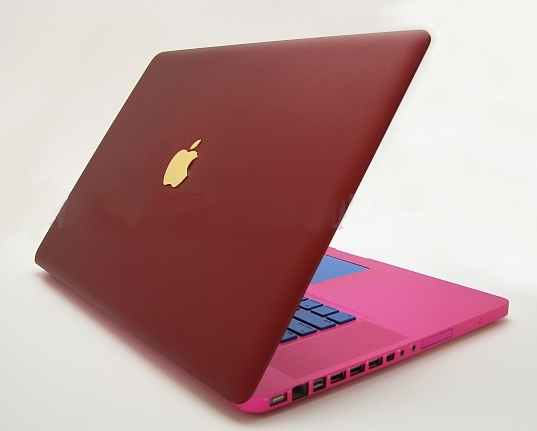
Photo Credit: Computer Chopper
Computer Choppers’ newest offering is a color anodized Macbook Pro 17” Unibody laptop. This particular unit features a pink chassis, red display housing, blue keyboard & trackpad, dark green screen bezel, and a 24kt Gold logo — a unique color scheme that definitely stands out of the crowd. The company says the neon pink anodizing needs to be seen in person to be fully appreciated.
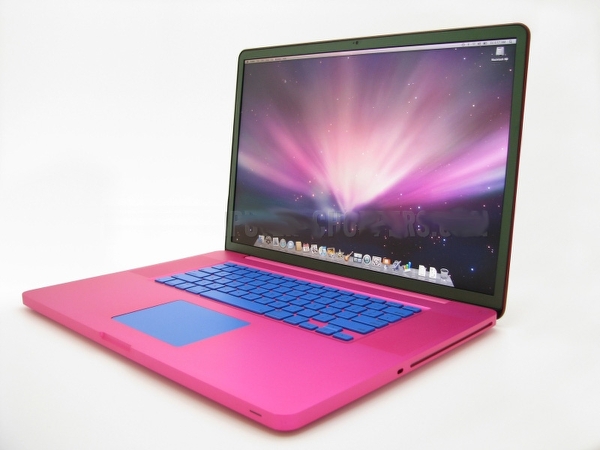
Photo Credit: Computer Chopper
Purple Anodized Macbook Air
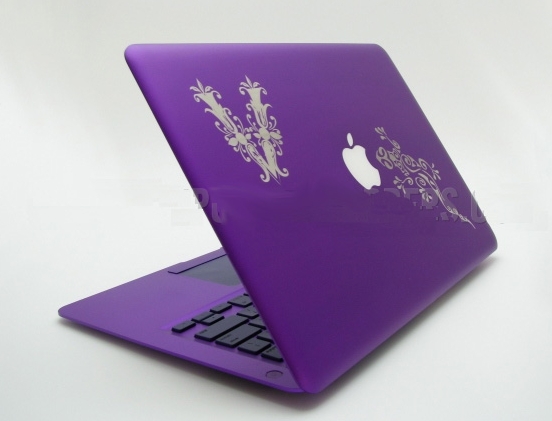
Photo Credit: Computer Chopper
Here’s a flat purple anodized and engraved Macbook Air with matching keyboard and trackpad. The same theme is also available as a polished candy finish.
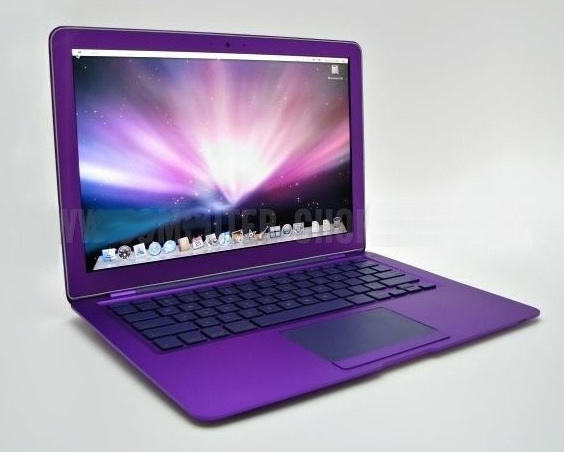
Photo Credit: Computer Chopper
Macbook Pro Black Anodized With 24kt Gold & Diamonds...
The anodizing process used by Computer Choppers is the same super scratch resistant surface treatment Apple uses on their aluminum Macbook lineup, only offered in different colors and finishes.
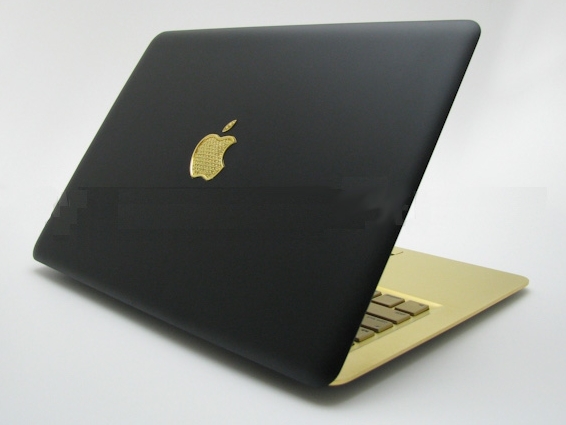
Photo Credit: Computer Chopper
Here is is a black anodized, Macbook Air with 24kt gold & diamonds
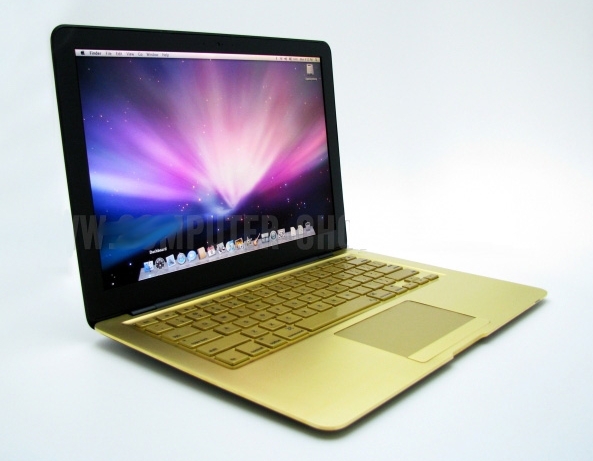
Photo Credit: Computer Chopper
Macbook Pro custom anodizing prices:
Color Anodizing Macbook Pro 13”
Optical (flat) Black: $899 USD
Hard Optical Black: $1,099 USD
Hard Optical Black with Teflon Coating: $1,199 USD
Candy (Polished) Black $1,499 USD
Color Anodizing Macbook Pro 15”
Optical (flat) Black: $999 USD
Hard Optical Black: $1,199 USD
Hard Optical Black with Teflon Coating: $1,299 USD
Candy (Polished) Black $1,599 USD
Color Anodizing Macbook Pro 17”
Optical (flat) Black: $1,099 USD
Hard Optical Black: $1,299 USD
Hard Optical Black with Teflon Coating: $1,399 USD
Candy (Polished) Black $1,699 USD
Other price quotes on request.
Available white glove service is available to clientele whose custom product cannot be securely shipped due to it’s high value. This service includes:
• Hand delivery with security detail • Product setup & installation • Lifetime warranty • Repair Support 24 hours a day, 7 days a weekFor more information, visit:
http://www.computer-choppers.com/
Note: Letters to PowerBook Mystique Mailbag may or may not be published at the editor's discretion. Correspondents' email addresses will NOT be published unless the correspondent specifically requests publication. Letters may be edited for length and/or context.
Opinions expressed in postings to PowerBook Mystique MailBag are owned by the respective correspondents and not necessarily shared or endorsed by the Editor and/or PowerBook Central management.
If you would prefer that your message not appear in PowerBook Mystique Mailbag, we would still like to hear from you. Just clearly mark your message "NOT FOR PUBLICATION," and it will not be published.
CM